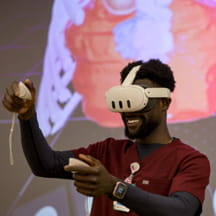Children's Minnesota is among a growing number of hospitals using software to meet the needs of patients related to social determinants of health. For Children's Minnesota, it's a platform called NowPow, one of a handful of services designed to help health care providers match community resources with patients in need. Jessica Block led the vendor selection process for Children's Minnesota. She says each platform has different strengths, but it was one feature that drew her to NowPow.
"It has an in-depth, vetted resource database that is kept up-to-date," says Block, community affairs specialist at Children's Minnesota. "We don't have to spend the time and energy building up the database."
What the technology can do
Children's Minnesota leverages that database to match patients with community resources that address their needs. Social workers, case managers and care coordinators across the organization can refer patients and their families to resources filtered on personalized criteria including condition(s), address, gender and preferred language.
It allows for consistency of referrals and for Children's Minnesota to track resource usage across its more than two dozen locations. This helps the hospital strengthen partnerships with trusted providers. And the technology enables the hospital to hire new staffers based on their "soft skills" and not their familiarity with the local resource network, according to Block.
Later this year, Children's Minnesota plans to roll out closed-loop functionality that will enable the hospital to coordinate with community resources to encourage patient follow-through. Early testing on that functionality is promising. With the help of the technology, Children's Minnesota has seen patient follow-through with internal food procurement resources rise from about 20% to 83%.
Two pieces of advice for building your solution
As other institutions begin looking to technology to address social determinants of health, Block says it's important to evaluate your unique needs—and then match those needs with the appropriate platform. "Let the technology do what it's good at, and don't try to change it to fit your needs," Block says. "What you want the technology to do is an absolutely vital question to ask."
Another key to a successful implementation: organization-wide support. Introducing new technologies and processes—especially for an experienced team—can be challenging. Block says she was fortunate to have "champions" across multiple departments at Children's Minnesota, creating a smooth transition. "You can't underestimate the value of good change management—it's about really engaging staff in the process and finding champions," Block says.


